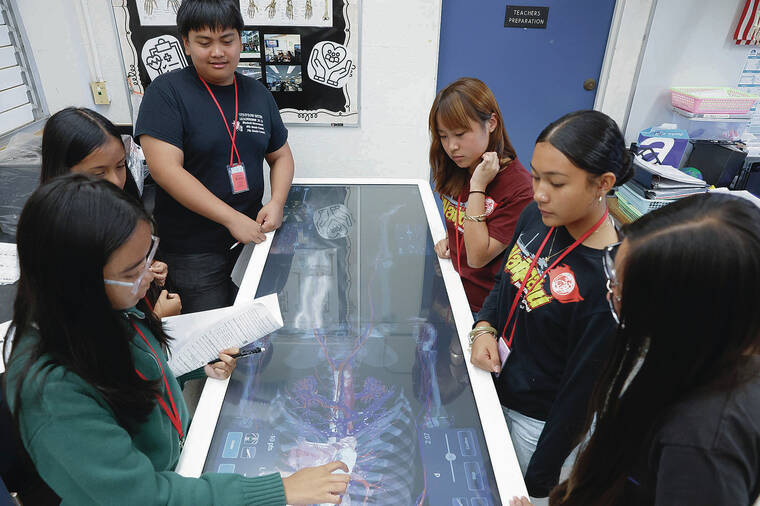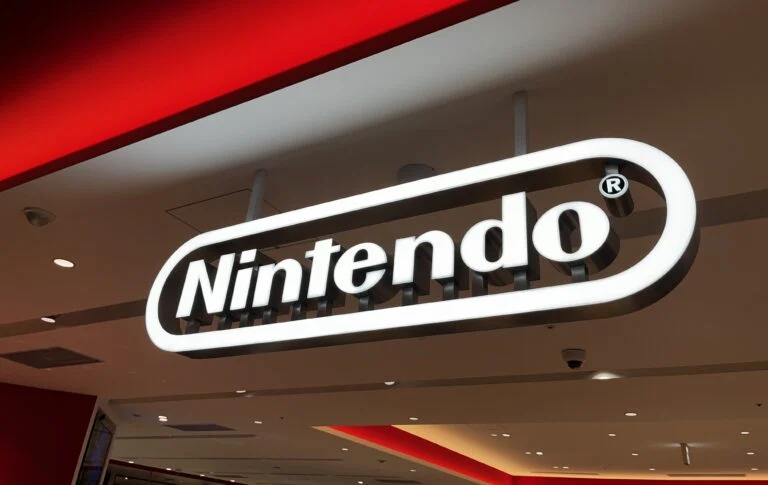By Victoria Budiono
Copyright staradvertiser

As COVID-19 took hold across the islands beginning in 2020, Hawaii’s public schools struggled to take stock of the damage wrought by the burgeoning pandemic. Remote learning had scrambled routines, while shortened statewide assessments limited what educators could measure, and thousands of students were missing from classrooms altogether.
The 2021 Strive HI report, the state Department of Education’s annual snapshot of student performance, painted a sobering picture: only 32% of public school students met math benchmarks in the 2020-2021 academic year, 35% met science benchmarks and just half were judged proficient in language arts. Chronic absenteeism soared, with many students missing 15 or more days of school and educators faced questions about how much learning had been lost.
Four years on, the 2025 Strive HI report, released last month, offered a more hopeful — though still complex — picture of recovery. The report shows that math proficiency climbed to 41% in the 2024-2025 academic year, science to 43% and language arts proficiency saw a slight increase to 53%.
High-needs students — including English learners, those who are economically disadvantaged, and students in special education — have shown particularly strong gains.
DOE Deputy Superintendent Heidi Armstrong said that in 2021, fewer than half of students demonstrated a year’s worth of learning in a year. By 2025, nearly 59% met or exceeded that benchmark.
Engagement has also improved, according to the 2025 report.
Regular attendance, which had plummeted during the pandemic, rebounded to 76% in the 2024–2025 school year, up from 66%. On-time graduation rates have remained steady at 86%, while post-secondary enrollment has risen to 53%.
Armstrong called the progress encouraging but incomplete.
“The proficiency is not where we want it to be, and we fully recognize that we have work to be done. But we are continuing to see growth year by year in the students, which is letting us know that we are making progress,” she said.
Hawaii’s rebound has also drawn attention from outside the islands.
A new study from Harvard University and Stanford University ranked the state among the top in the nation for post-pandemic recovery — fourth in math and second in reading between 2019 and 2024.
The Education Recovery Scorecard found that while 85% of U.S. students remain in districts where math scores have yet to return to 2019 levels, Hawaii is one of the few states to surpass pre-pandemic performance.
On the National Assessment of Educational Progress, Hawaii was one of only 15 states to post statistically significant gains in fourth grade math, outperforming the national average for the second consecutive cycle. In reading, Hawaii’s fourth graders have climbed from the bottom tier two decades ago to the top 10 nationally.
System-wide push
Armstrong said DOE has made significant shifts in how it supports schools, including benchmark testing three times a year and tiered interventions for students who fall behind.
“We do see our gaps between our high-needs and our nonhigh-needs students. And we have made a very concerted effort to make systemic changes as a state following the COVID-19 pandemic,” she said.
The department has also emphasized student well-being, recognizing that unmet needs outside the classroom — such as food insecurity, mental health challenges, and lack of family and community support — can undermine learning.
Through programs like the Hawaii Multi-Tiered System of Support; “Here to HELP,” which supports student well-being and mental health; “social-emotional learning” initiatives; and school-based behavioral health networks, DOE provides layered support ranging from school-wide prevention and social–emotional skill–building to targeted counseling and intensive interventions, tailoring resources to each school’s culture and student needs.
“We focus a lot on the social needs of the kids to make sure that we’re addressing any areas that are preventing them in their well-being from coming to school ready to learn,” Armstrong said.
Focus on growth
At Waianae High School, Principal Ray Pikelny-Cook said the path forward has required focus and discipline.
Before, she said, the instinct was to try to fix everything at once. Now, teachers concentrate on three core instructional strategies with support from mainland consultants at WestEd.
“There was everything under the sun to fix,” she recalled. “But this time, we chose the three high-yield, greatest effect-size strategies that we can implement in the classroom: daily learning targets, academic conversations and formative assessments.”
Waianae High has been consulting with WestEd for three years, and Pikelny–Cook said the school began seeing promising improvements last year.
The Instructional Leadership Team would conduct regular classroom walk-throughs to collect data, then sit down with mainland coaches to reflect and plan for professional development.
“It was changing the mindset around assessment and getting teachers and students to reflect on their progress with the focus on growth — to watch yourself move gradually instead of just moving from an ‘F’ grade to an ‘A’ grade,” Pikelny-Cook said.
Waianae High saw substantial improvements in student proficiency this year, as compared to last year, with English language arts scores rising from 26% to 46% and math scores increasing from 8% to 21%. WIDA scores, which measure English language proficiency, also rose from 7% to 17%.
Pikelny-Cook noted the gains occurred across all student groups, including special education and English learners.
Attendance hurdles
Attendance, though, remains a major challenge.
“A lot of parents still don’t want their kids to come back to school. So we’re still trying to get people from the pre–pandemic time to come back to school,” Pikelny-Cook said.
Her staff has turned to phone calls, home visits and flexible plans to reengage students. Some are encouraged to pursue credentialing programs or career pathways as a way to stay motivated.
“If they’re not interested in going to college, then we don’t push, but they have to have some sort of plan,” she said.
Just as at Waianae High, Waipahu Intermediate also faces hurdles in getting students on campus.
“Some of the higher-needs students do have a lower attendance rate than nonhigh-needs. So there’s a gap in academics as well as coming to school,” Principal Alvan Fukuhara said. Improving attendance, he added, is crucial for sustaining academic gains.
But there’s been a positive trend in attendance overall, which increased from 66% in the 2021-2022 school year to 78% in 2024-2025 for students attending at least 90% of instructional days.
At Waipahu Intermediate during the last school year, 82% of students not classified as high needs demonstrated proficiency in language arts, compared with 53% of high-needs students, resulting in a 29-percentage-point achievement gap.
In math, 61% of nonhigh-needs students and 32% of high-needs students were proficient, another 29-point gap.
Proficiency in math and science also has improved over time. Math proficiency increased from 24% in the 2020-2021 academic year to 42% in 2024-2025, while science proficiency grew from 27% to 51% over the same period.
Fukuhara has seen progress by breaking down “silos” between departments. His science, math, English and social studies teachers plan together, integrating lessons so students can see connections across subjects.
“Our teachers work together so that students are seeing integration. So they’re not just learning math in math. They’re learning math in science and in English,” he said. “Creating those assessments to find out what the students know and don’t know, and then making adjustments to that teaching — that’s made a big difference.”
In 2022, Waipahu Intermediate expanded its elective offerings to better prepare students for the corresponding high school’s academy model. Middle schoolers can now explore courses in agriculture, health services, media production, business marketing and more, with culinary arts emerging as one of the most popular options, Fukuhara said.
“As a whole complex in Waipahu, the elementary, us and then the high school, we’re all aligned now, and that’s pretty unique within the state,” he said. “Although I wish I could offer more periods for the electives, there are challenges due to staffing and classrooms.”
Waipahu Intermediate is the only intermediate school in Hawaii to offer all five Career & Technical Student Organizations, providing students with opportunities to develop leadership skills and engage in career-focused activities.
Providing career paths
Despite improvements, Hawaii’s achievement gaps remain stubbornly wide.
DOE reported that by 2025, nonhigh-needs students were nearly twice as likely to be proficient in math compared with their high-needs peers — 58% vs. 29% — and the gap in language arts proficiency stood at 34 points.
Armstrong said she is encouraged by signs of growth but knows there is much more to do.
“It is showing us that we are moving the needle, but again, recognizing we have a lot of work to do,” she said.
DOE is also investing in workforce readiness, aligning career and technical education with industry needs and expanding internships.
“We have a very robust workforce initiative … which allows coordination between the Department of Education and industry partners to be able to provide internship experiences for students,” Armstrong said.
Elementary schools are introducing career exploration, middle schools are preparing students for pathways and high schools are expanding hands-on experiences.
Armstrong said the effort is designed to ensure students graduate with a clearer sense of their options, whether they pursue college, training or direct entry into the workforce.
Enrollment has declined across all 296 public schools, dropping from nearly 175,000 students in 2021 to about 165,000 in 2024, with nearly half of students statewide classified as economically disadvantaged.
In response, the DOE has considered redistricting schools or closing campuses and is exploring strategies to boost student engagement and retention, including expanding elective offerings to make education more relevant and appealing.
Still, Armstrong said, the story of Hawaii’s schools is one of resilience.
“We have excellent teachers within the system,” she said. “I’m very proud of all of our educators, in whatever capacity they serve within the department. We couldn’t have ask for a better team.”



